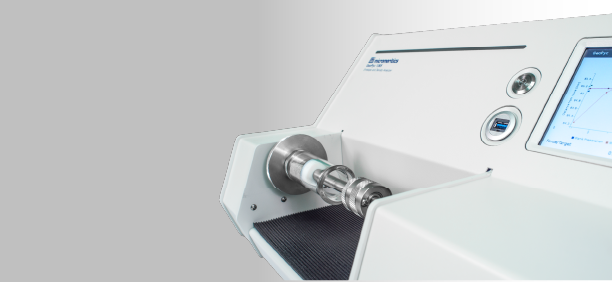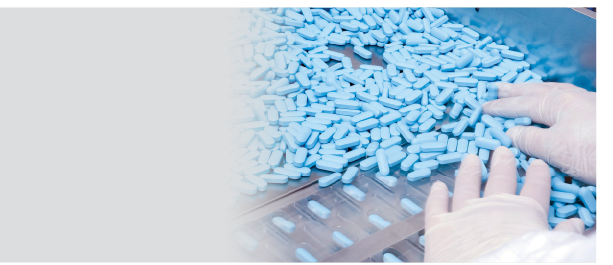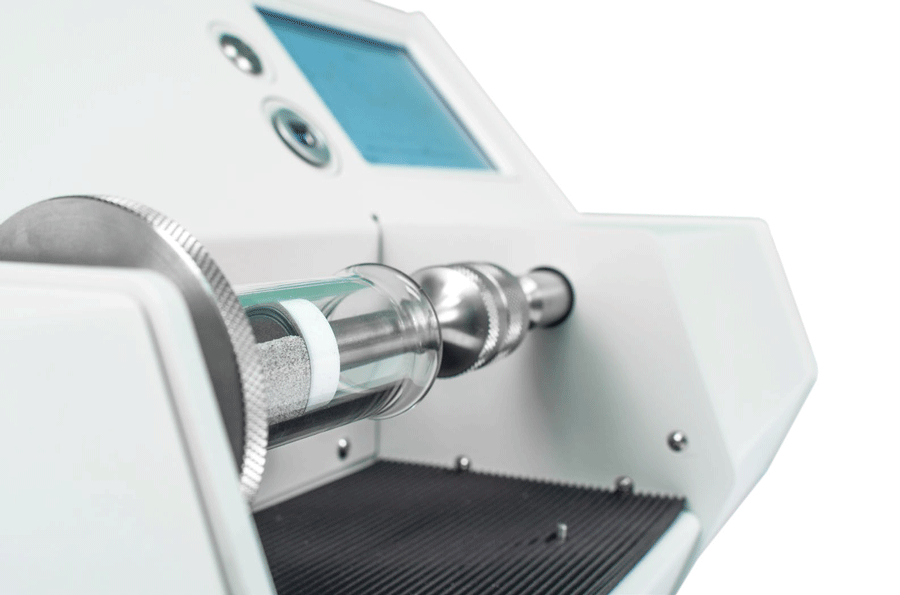Analyzing Samples that Occupy Less than 10 Percent Cell Volume on AccuPyc II

Samples measured by the AccuPyc should occupy more than 10 percent of the measured cell volume for the most accurate results. This can be difficult to obtain if a low sample quantity is available or if the sample bulk density is low. The cell volume is determined through the volume calibration process and is dependent […]
Consolidation Force on the GeoPyc when Measuring Foams

One of the biggest challenges with density analyses involving foams is compression. Determining the skeletal and envelope density of a foam must be performed in a manner where material compression is not significant. ASTM D6226 requires foams to be analyzed, with a gas pycnometer, at a pressure of 2.9 PSIG (20 kPa) and it is […]
Measuring Volume, Density and Porosity of Tablets for Coating Process Control and QC

Many medicinal tablets are coated to improve in-vivo performance. Coatings are used to mask the taste of active pharmaceutical ingredients (APIs) and to control the location and rate of dissolution, to aid uptake, reduce side effects or prolong action via controlled release. As a result, coating integrity and thickness may be Critical Quality Attributes (CQA) […]
Analyzing Liquids with the AccuPyc
Introduction The AccuPyc is widely used for analyzing both solids and powders. Little information is readily available for using a pycnometer to analyze liquids. The AccuPyc measures pressure of the system to determine volume and calculate density. Pressure generated by sample evaporation can diminish precision and system equilibrium might not be obtainable. Vapor pressure is […]
Understanding the Uncertainty and Precision Specifications for AccuPyc
A frequently asked question is, “What is the accuracy of the densities reported by the AccuPyc?” And that is a good question. The problem is that, though the AccuPyc reports the skeletal density of the sample under test, it actually determines the skeletal volume, V, of the test portion. It uses the sample mass, M, […]
Determining the Open Cell Content of Rigid Cellular Plastics with the AccuPyc 1330 Pycnometer
Cellular plastics consist of thin polymeric membranes separating small cavities or cells. The cells may be mostly closed and separate, mostly open and interconnecting, or a combination of the two. The percentage of open cells is indicative of the insulating quality of cellular plastics and is an important variable, requiring control during manufacture and evaluation […]
Determining the Force or Pressure to Use for T.A.P. Bulk Density with GeoPyc 1360
To measure bulk density, the GeoPyc® 1360 consolidates the sample within a cylindrical chamber until a specific force is achieved. A measurement is taken at that point, and subtracted from blank (empty chamber) data stored in the GeoPyc to yield the sample’s bulk volume. This volume and the sample’s weight are used to calculate bulk […]
Measuring Volume, Density and Porosity of Tablets for Pharma Process Control

Volume, density, and porosity are interrelated parameters widely recognized as important for the control of drug product manufacture. Tableted medicines need to be a consistent size and shape for efficient packaging and patient acceptability. Envelope density can be a useful check of tablet consistency, since it may be influenced by the extent of compaction, while […]
Evaluating Catalyst Substrates with the GeoPyc® 1360
Critical factors in operating catalytic reactors are the envelope density and porosity of the catalyst itself.These properties are quickly and easily assessed with Micromeritics’ new GeoPyc 1360 in conjunctionwith Micromeritics’ AccuPyc™ 1330. Envelope density (sometimes called bulk density) is simply the weight of a quantity of catalyst divided bythe volume (including the pores) of the […]
Emulating Tap Density With T.A.P. Density on the GeoPyc

Conventional tap density analyzers obtain the volume of a material by lifting and dropping a graduated cylinder multiple times until the sample bed no longer compacts. This is a loud process that requires an operator to estimate the level on a graduated cylinder to the nearest tenth milliliter. The GeoPyc emulates conventional tap density analyzers […]